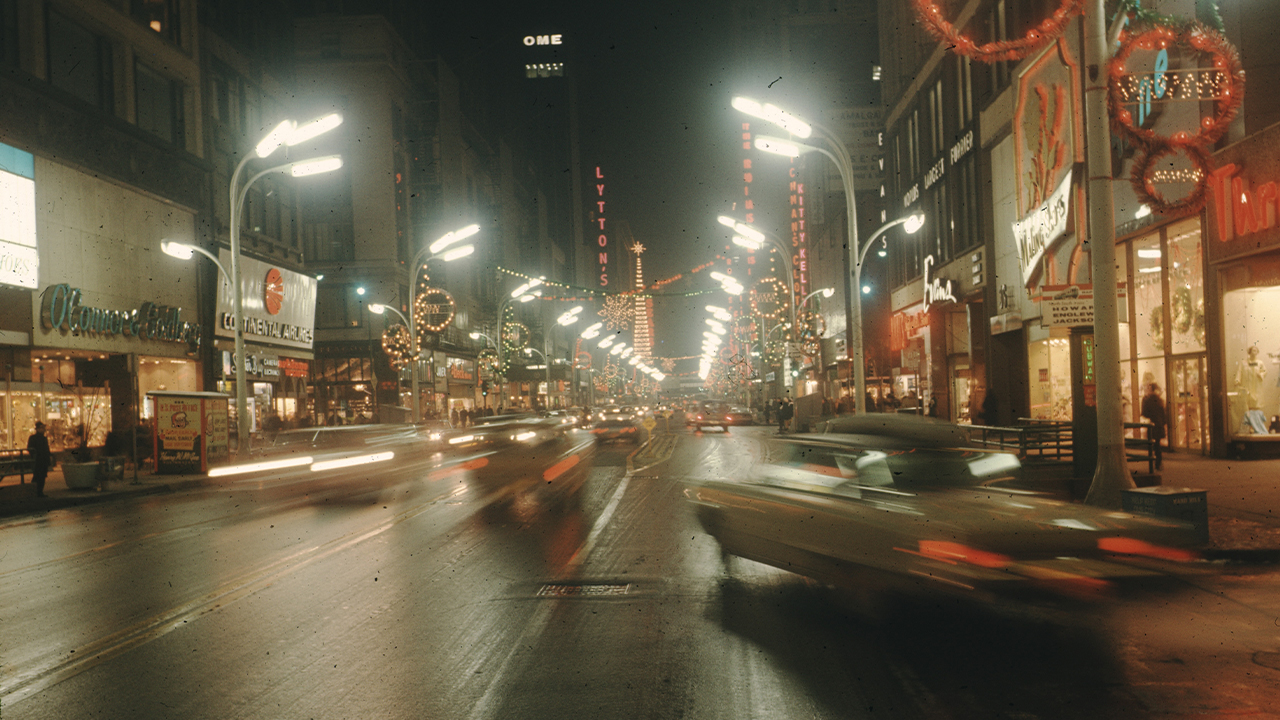
It has been a boon to many publications to have access to free, good-quality photos to run with their words. The Common Reader uses many public-sourced photos, and it is one of my favorite things to do, having nearly finished an essay, to search Wikimedia Commons for an image to go with my piece if I have not shot one myself.
Choices might include establishing shots (a city’s skyline, eg), a match for a topic (cats), something thematic (whatever visually portrays “hungry”), or more rarely a historical photo or illustration (Emerson’s study). What I rarely see at the Commons is creditable art or street photography: a combination of subject, opportunity, camera quality, technical skill, an aesthetic-moral eye, intelligence, and wit.
Two years ago I wrote a short piece meant to be artful, so I went looking for an artful photo. I found it in an image by Wiki contributor Victor Albert Grigas. A man in a mac walks along a road through some woods above a river. (The person could be a woman, but my piece is about a man.) The image is tilted, so he perpetually walks uphill, his back to us and a hood covering his head, stripping individual identity. The weather is gray and cold, but the figure steps out, elbows in motion, looking down at the river and snow. A crossroads lies ahead, just out of frame. The photo is mysterious, atmospheric, and prone to being symbolic, which was right for my piece, about a dream-encounter by a river.
The archive [of Victor Grigas] holds a majority of casual snapshots—family members, camping trips, the construction of a house addition—but other photos are more arresting, because you sense things are going on in them that you do not understand at a glance.
I got curious about Victor Grigas, clicked a link at the Commons, and was surprised to land in a Flickr archive of 3,500 of his photographs. All are old enough to have the look of faded Kodachrome or Tri-X (black and white) film. Few are captioned, but cars, hair styles, and clothing point to the second half of the last century. Locations include packhorse trails in a mountain range, the streets of Chicago, and sites in the UK, Spain, and Turkey.
The archive holds a majority of casual snapshots—family members, camping trips, the construction of a house addition—but other photos are more arresting, because you sense things are going on in them that you do not understand at a glance.
One shows a nice couple tanning on a beach. Lotion bottles sit between them on the small, rounded stones. Other people lie on bright, rented mattresses and under beach umbrellas nearby. A heavy seawall defines the background. The civilized vibe makes my American mind think the word “plage,” as if I invented it. But, wait: That is a well-oiled copy of Playboy the man in the couple is holding, as he grins up at us.
Here is another nice couple on a beach, who serve as a portrait of a long marriage in the red. Here is a woman with magnificent ginger hair holding a pumpkin like a prize possession next to her face. Here is a logging truck barreling along in a cloud of dust, through forested mountains, pine woods, upright fence posts, and a telephone pole, evidently late for a Wes Anderson film.
Questions arise. Who is this trumpet player with Jerry Lee Lewis locks? Or this young couple getting better acquainted, perhaps not without regret?
Will the people looking at us from the Ego bus ever be able to get off?
Should we get on the chopper? Everyone else seems interested, but it looks a bit ominous to me.
I began to wonder if Victor Albert Grigas was someone like Vivian Maier, the brilliant artist who lived her life quietly, worked as a caregiver, and left behind 100,000 street photography negatives that no one else knew existed.
I would like to have talked with Grigas, but an online obituary says he died in 2017—no great surprise, as he would be 106 now. The obituary gave some biographical information and said “he pursued a successful career as a photographer.” I wondered about that “pursued.” And in a tone reminiscent of the photos, the obituary added, “We love you. Etc., Etc., Etc.” I arranged a FaceTime video interview with his son last week to learn more.
• • •
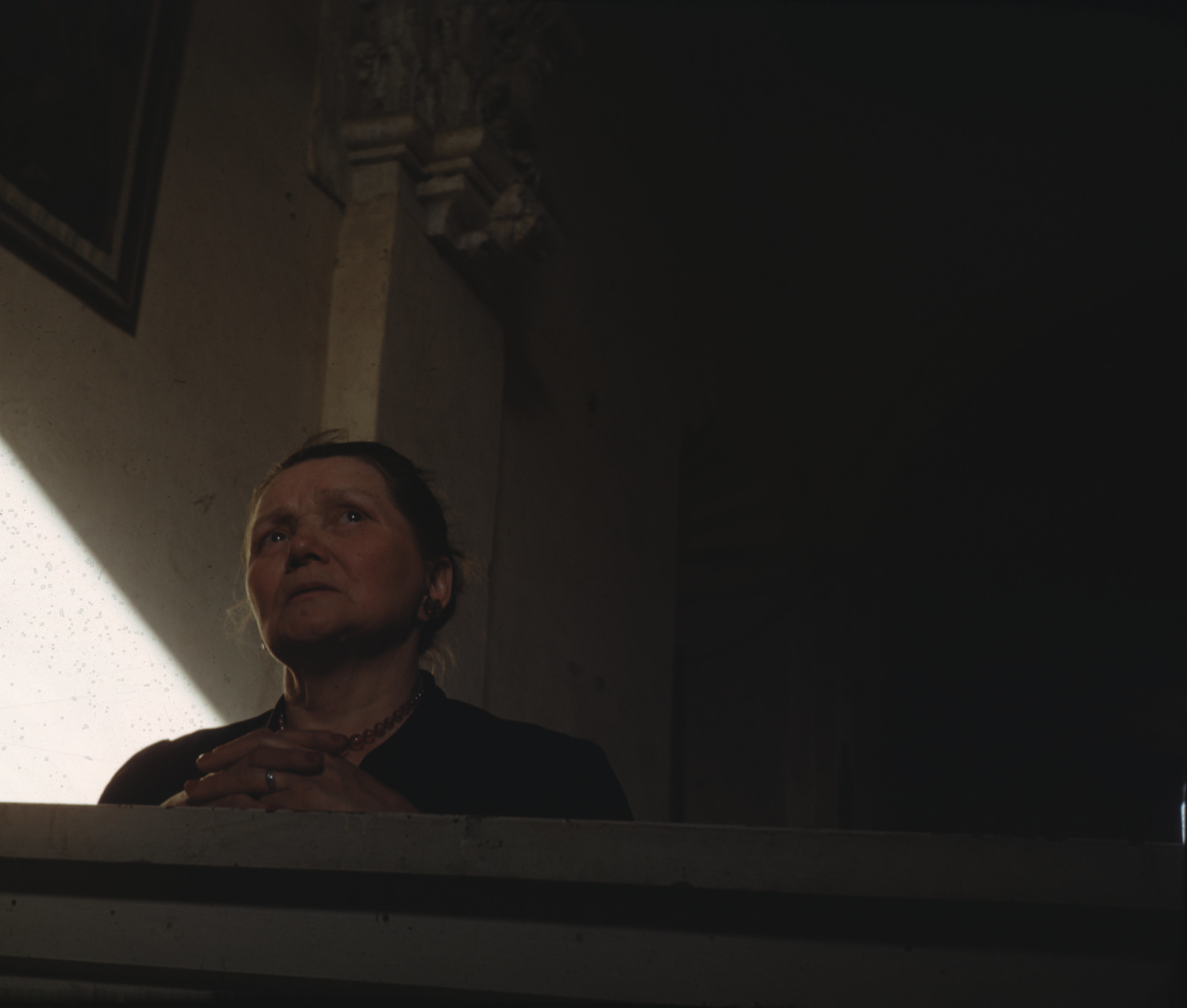
The photographer’s mother. (Victor Albert Grigas, Creative Commons Attribution-Share Alike 2.0 Generic)
Victor Albert Grigas was born Vytautas Grigas in 1919 to Lithuanian Catholic immigrants, in the Bridgeport neighborhood of Chicago’s South Side. It was a rough childhood.
His son, Victor Hamilton Grigas (whom I will refer to as VHG, for clarity) is an accomplished photographer, video producer, and storyteller himself, who lives near Boston. He reminds me that Upton Sinclair’s The Jungle (1906) is specifically about Lithuanian workers’ horrific living and working conditions in that area of Chicago.
The infamous Bubbly Creek from the novel, “an arm of the Chicago River [in which] all the drainage of the square mile of packing-houses empties…so that it is really a great open sewer a hundred or two feet wide,” runs along the west side of Bridgeport.
Victor’s father left the family quickly, and to survive his mother ran what was called a “beer flat” and brothel out of their apartment during and after Prohibition and the Capone era, with young Victor’s help.
“The grease and chemicals [and guts and blood] that are poured into it undergo all sorts of strange transformations, which are the cause of its name; it is constantly in motion as if huge fish were feeding in it, or great leviathans disporting themselves in its depths,” Sinclair writes, little more than decade before Victor was born. (More than a century later, the “creek” is still an environmental nightmare.)
Victor’s father left the family quickly, and to survive his mother ran what was called a “beer flat” and brothel out of their apartment during and after Prohibition and the Capone era, with young Victor’s help.
“[D]uring Prohibition my dad would go to Maxwell Street to buy blocks of yeast the size of a loaf of bread, and everyone knew what it was for,” VHG says.
His father told the story “many times” of how when he was sixteen his mother handed him a shotgun and said, “Some men are going to come by the bar tonight. You’re a man now. You have to defend the bar.” (Capone was put away when Victor was twelve; Prohibition ended when he was fourteen. The story must have been about other gangsters.) That night when the gangsters’ car drove by, twice, he stood in the doorway and let a lightbulb shine on the gun barrel. They kept going and did not return.
“So that’s the kind of place he was from,” VHG says.
Victor used to tell his family that as WWII approached there was “serious debate” in the immigrant community about their roles in the war. They were working class and suffering in the Depression, and many were socialists or communists. Old-country loyalties persisted but were confused, as Germany, Poland, and Russia all held parts of Lithuania in their lifetimes.
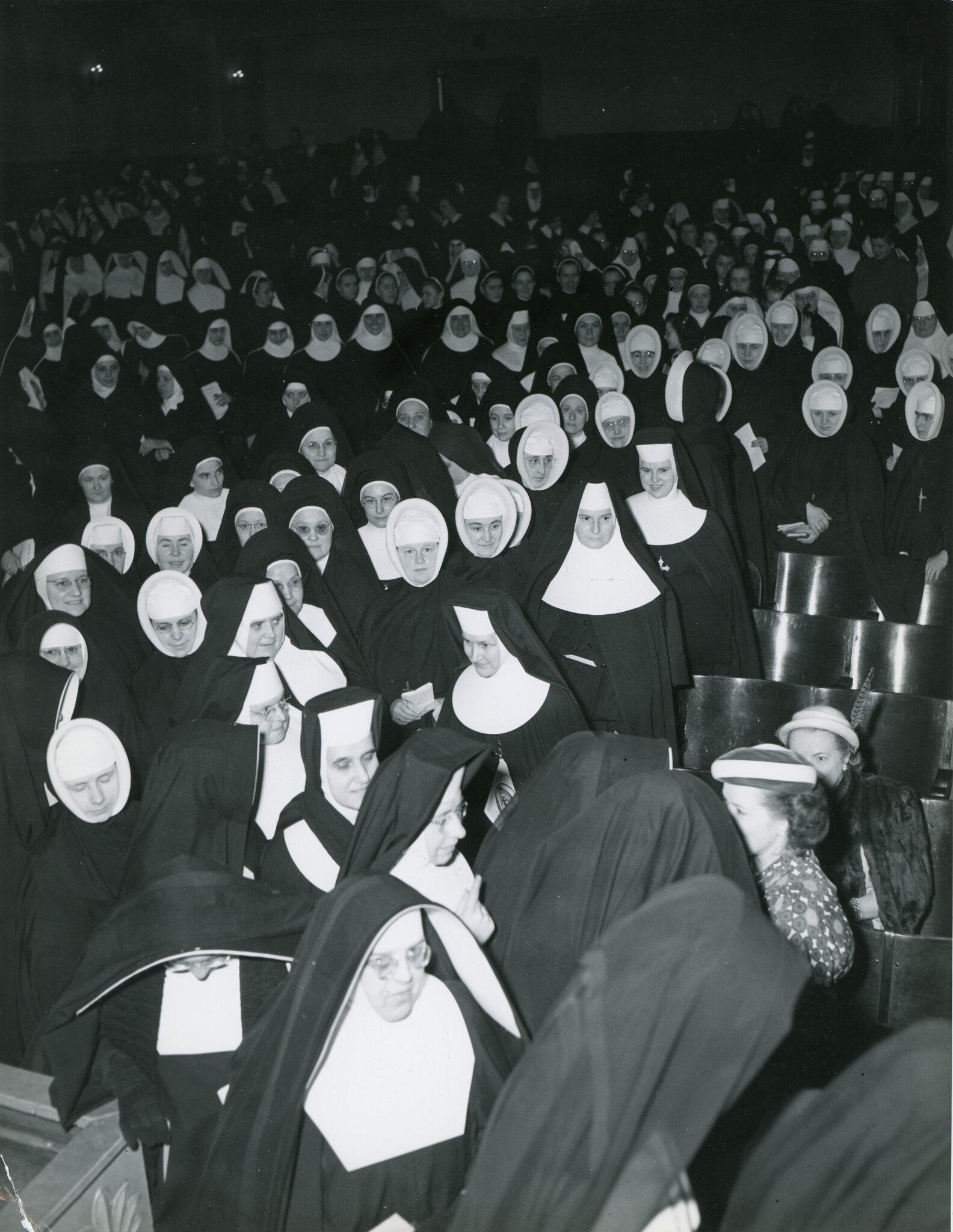
Grigas had a preoccupation with patterns, textures, and repetition. (Victor Albert Grigas, Creative Commons Attribution-Share Alike 2.0 Generic)
“On my grandmother’s [immigration] paperwork, it says Lithuania,” VHG says. “On my grandfather’s paperwork, it says Russian. [T]hey’re from the same place.”
“My dad said that in that kind of neighborhood, people [were] still fighting the same fights [they had] fought for a thousand years. [H]e thought it was totally crazy.” But he loved to read and said that when he found a copy of Mein Kampf, he understood immediately what was at stake, and that was why he joined the army.
“[G]ranted, he’s telling me these things fifty years after they happened,” VHG says. “I think at the time he was a young man and he was idealistic and he was a little macho, and he saw his friends getting drafted and he decided that he should sign up.”
(There are discrepancies and unknowns about Victor’s military service. Most of his records apparently burned in the disastrous 1973 fire at the National Personnel Records Center in St. Louis, along with those of 80 percent of all soldiers discharged between 1912 and 1960. Victor told his son he had four deferments from the draft—presumably one for eyesight—that should have kept him out of the army, but he joined anyway. Victor also told his family he was in the army three and a half years, “but his record says two and a half, I think,” VHG says. “I guess over time, things get exaggerated a little bit….”)
Victor said he was stationed in Florida and was put in charge of a machine that made perhaps a quarter of the dog tags for the entire army, VHG says. “[W]hat’s funny is, years after he died…I found this bag of dog tags [on which] he had stamped out poetry and love letters to his wife. […] I don’t think anything like this exists [elsewhere on] the entire planet.”
“My dad said that in that kind of neighborhood, people [were] still fighting the same fights [they had] fought for a thousand years. [H]e thought it was totally crazy.” But he loved to read and said that when he found a copy of Mein Kampf, he understood immediately what was at stake, and that was why he joined the army.
Victor said he then received German language instruction at Bard College and Notre Dame, perhaps to be an army interrogator, but about the time of the Battle of the Bulge he was sent to Europe, served as a combat engineer instead, was wounded in battle, and recovered in a Belgian hospital.
Until then he had been known as Vytautas, but other Americans thought he meant Vito and that he was Italian.
“If you have an ethnic name, and you’re in America…you have to keep explaining this to everybody,” VHG says. For the first time, “he’s not just in the neighborhood anymore. He’s surrounded by all these [other] Americans.” While he was in Belgium he seems to have started calling himself Vick or Victor, but for the rest of his life, “every time he ran into an Eastern European it switched to Vytautas.”
“He didn’t like being in the army. I would tell him about…military parades [and say,] ‘Why aren’t you there? You did something good,’” VHG says. “And he would look at me and be like, ‘That’s not the best thing you could ever do.’”
VHG thinks his father skipped college after the war because he wanted to get home, make some money, and “have things normal” again. He valued learning, though, and taught his son that a liberal education “give[s] you a breadth of understanding of the world.”

Trenching machine. Grigas liked to show work and tools. (Victor Albert Grigas, Creative Commons Attribution-Share Alike 2.0 Generic.)
After the war, Victor started a photo business with his first wife, Victoria, also a Lithuanian-American. His uncle had a photo business and taught him photography, and Victor had a little camera. He began working by walking into a wedding one day and asking, “Do you need a photographer?”
The wedding party said they had one, but that Victor could take photos if he wanted.
“And he was elbowing this hired photographer [out of the way], and the bride ended up liking my dad’s photos better,” VHG says. “And so he started doing weddings and built a business from there.”
He called his business Victor Studio. It did well and employed as many as five photographers. “But the problem with being successful is that he couldn’t do photography anymore,” VHG says. “He had to just focus on business [and] tell the other photographers what to do.”
Victor and his wife began to buy cheap properties around the city and renovate them. After the studio closed and the marriage ended, Victor maintained and rented his remaining properties, from about 1960 to 1972.
He called his business Victor Studio. It did well and employed as many as five photographers. “But the problem with being successful is that he couldn’t do photography anymore,” VHG says. “He had to just focus on business [and] tell the other photographers what to do.”
“[H]e would say he didn’t have money, but he had bricks,” VHG says. The properties “were basically scheduled to be torn down, because the Chicago building code had been updated, and they needed fire escapes and…all kinds of work. And so he did the work…and he’d hire all kinds of hippies [and] was basically in the hip scene in the sixties. He was a generation older…but I think he quite liked being around all these young women in the Free Love era…. [He] didn’t look his age, I remember.”
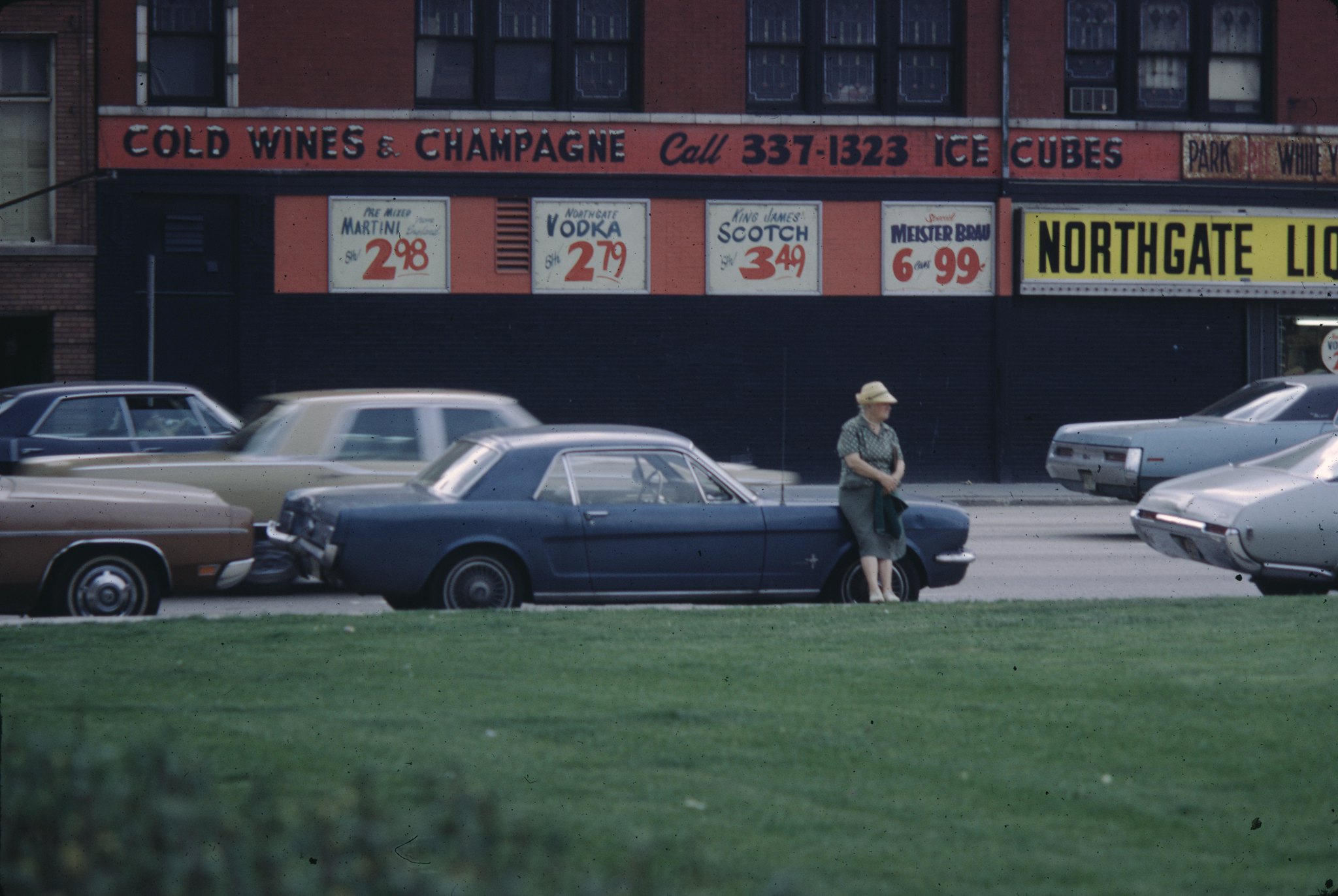
Chicago. (Victor Albert Grigas, Creative Commons Attribution-Share Alike 2.0 Generic)
Many Victorian buildings in Chicago were being demolished to make room for high-rises. Dumpsters were full of architectural fixtures and fittings, and Victor salvaged them for his own places. Other times he went “midnight requisitioning,” as he called it.
“Outright theft,” VHG says. “He would see people renovating, and he would walk in [as if] he’s one of the people working there and just take some stained glass…. And he knew how to steal. [Y]ou don’t aim for something so big that everyone’s going to notice it and call the cops and do a big search. You aim for something small that’s not worth somebody’s time….”
His attitude was, “’[W]hy would I buy a new door when there’s an old door there I can use? Why would I buy trim? [I can get] an old Victorian dresser…warped on the top and put a sink in it.’”
“This kind of stuff is hip now; you see it on Etsy,” VHG says. “[H]e was always very attentive to style. [H]e really had an eye for it. And so he would renovate these things in super funky ways.” The outsides of his buildings were funky too, but with a sense of physical security: vertical railroad ties, brick, mortar, seashells, tile, radiator parts.
“He loved being impulsive. He loved the chance to [say,] ‘Let’s see where we can go with this.’”
“This kind of stuff is hip now; you see it on Etsy,” VHG says. “[H]e was always very attentive to style. [H]e really had an eye for it. And so he would renovate these things in super funky ways.” The outsides of his buildings were funky too, but with a sense of physical security: vertical railroad ties, brick, mortar, seashells, tile, radiator parts.
“[Y]ou also see the war in it,” VHG says. Two of the buildings, in Lincoln Park and Old Town, are still in the family and get rented.
Victor also loved plants. Years later, he would build out the basement unit of one of his buildings to have floor-to-ceiling windows, and excavate under a fire escape to put in a greenhouse. VHG, who was born in 1980, says they had tropical plants. Victor “would take trimmings and trimmings and trimmings…in every conceivable bucket and coffee can, [a]nd he’d bring them all out in the summer and then bring them in in the winter. [T]he house would be a jungle. And I remember riding my tricycle around the plants. It was like a canopy above me, in the basement.”
In the late sixties Victor met and proposed to a woman of Turkish heritage. They went to Turkey to visit her family and stopped in other countries enroute. She declined marriage in the end.
“But there’s a lot of pictures from this trip,” VHG says. “I put them on Flickr, and they’ve had around 10 million views.” Turkish people have contacted him to say they see their brother, uncle, aunt in the photos. Someone pitching a TV commercial wanted to use them.
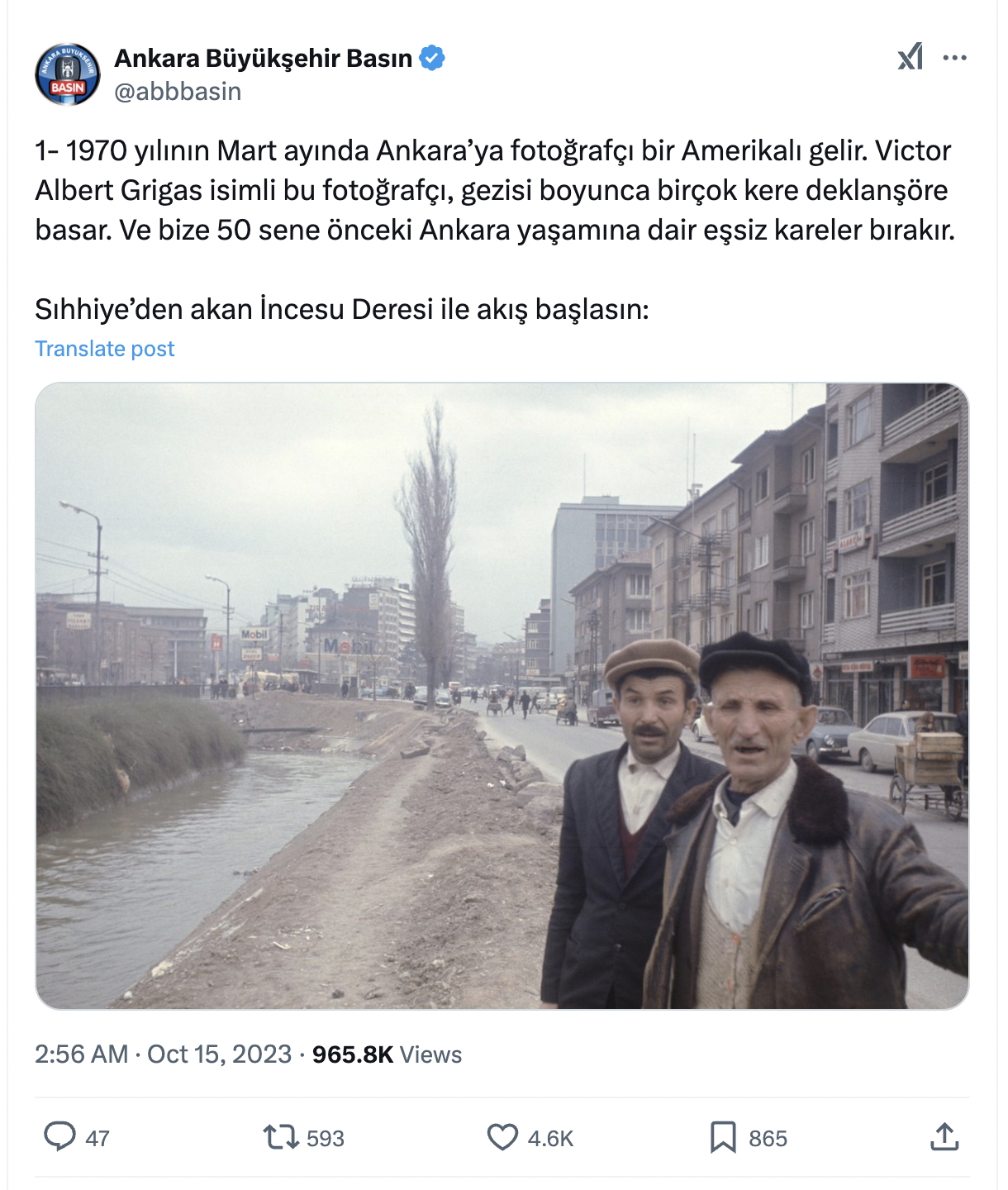
Screenshot from X of one of Grigas’s photos that got nearly a million views recently after a Turkish influencer posted it.
Because of creative commons licensing, “They’re free to use as long as you give credit,” VHG says. “I want his name to be preserved that way, and I want people to use them.”
Victor met VHG’s mother, Mary Anne Hamilton, “around 1975.” He was 55, she 25. They were married 39 years.
“He should [have been] my grandfather, but he [was] not my grandfather. He [was] my dad,” VHG says. His brother, Ray, was born in 1982.
“[Victor] was very into fitness, I’ll put it that way,” VHG says.
Victor continued to shoot photos “when he could” and intended to build a darkroom in the basement of one of his buildings but never did. He liked Leicas and also had a 2¼ inch format camera and a 5×8 for portraits in the studio. VHG says there was a business in Chicago called Triangle Camera that had open dark rooms where photographers could process their film, and Victor may have used it once or twice. He shot a lot of slide film but did not develop it, something Vivian Maier did too, due to cost.
“I think he was proud of being creative,” VHG says. But “he had a very deep distrust of people…given [that] he came from this kind of conman, slummy background. [H]e saw people who would use the word ‘artist’ in an exploitative way. And so he wouldn’t like being called an artist. He would say ‘creative.’ He would say it was an expression of self.”
“I mean, he was critical. He would look at me and my brother when we were little kids, making art, and he would judge it. He’d be like, ‘That’s not so good. That’s good.’”
“I [had] a cell phone shot of my eldest daughter as a baby, and he would judge the baby photos. I want to show him my kid, and he would judge it photographically.”
“I think it’s actually very constructive. If I’m going to get my dad’s affection, creatively, as an artist, you [have] to be critical.”
“I think my dad always saw creativity through the filter of making money. […] Somebody gives you money for your art, that’s respect.”
Victor and Mary Anne separated in 1998, though she never stopped loving him, VHG says. Victor squabbled with his sons but needed their help maintaining his buildings and let them live in one. “If you [said] forward, he [said] sideways,” VHG says. “He always wanted to…do things his own way. He was extremely stubborn.”
“And so my dad, he wasn’t the best dad.”
Eventually, VHG says, what was meant to be a win-win felt like exploitation. At 29 he got a job with the Wikimedia Foundation.
“I was the only one left. [H]e had alienated everybody [else] and couldn’t take care of his things. And he gave me a call, and I said, ‘No, Dad, I have a salary. I work in San Francisco. I work for an amazing tech nonprofit that I believe in. And I’m the next generation, Dad. I have to do something with my life. You don’t own me.” VHG says that his dad’s and grandmother’s generations thought they owned their children.
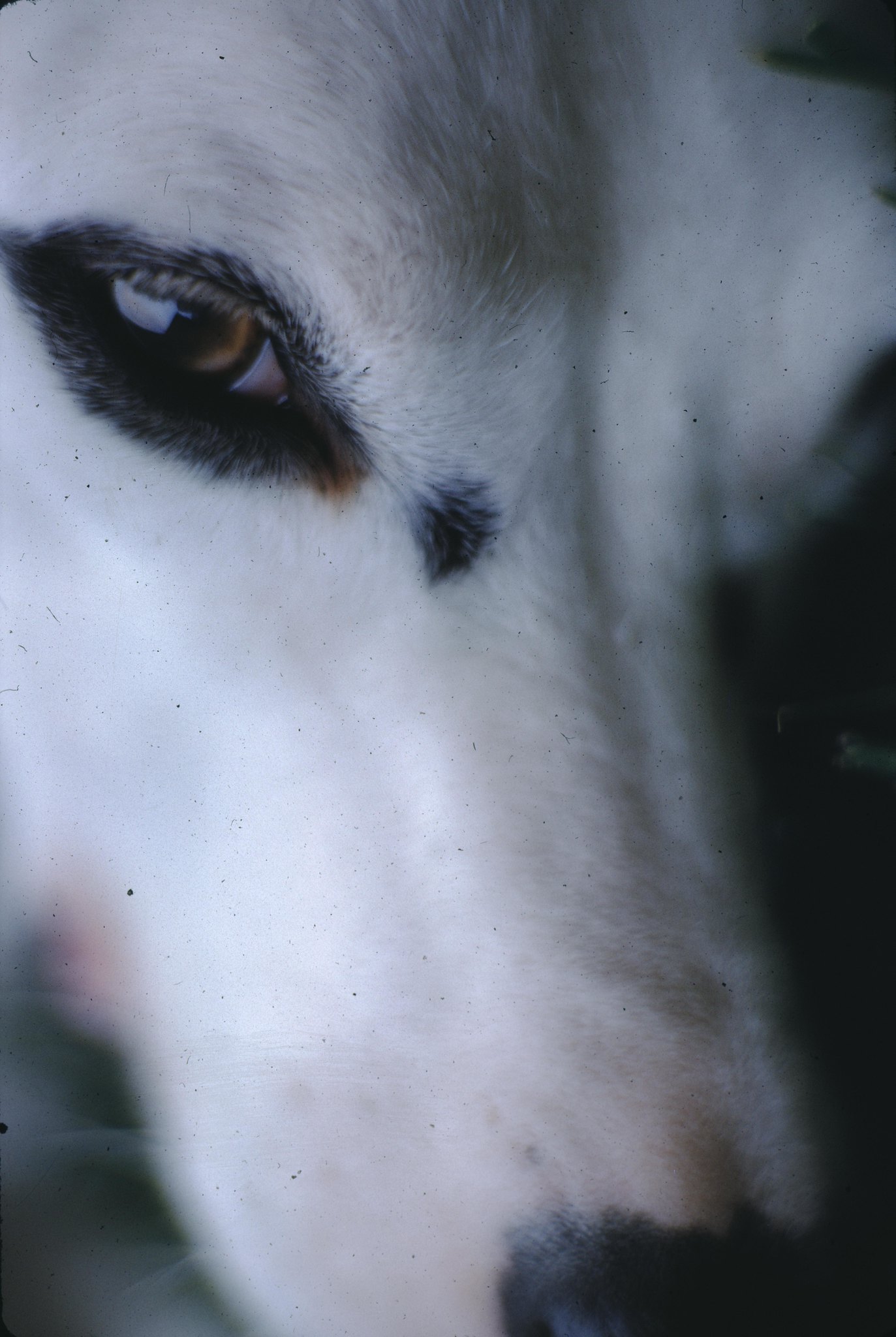
Grigas loved animals and raised dogs. (Victor Albert Grigas, Creative Commons Attribution-Share Alike 2.0 Generic)
But Victor eventually patched things up with his family, and when he was in his nineties, he got to meet two of his granddaughters. The week before he died, in a veterans’ home downstate, “[I]t was really nice to be able to say, ‘You have a legacy,’” VHG says. “You don’t just have buildings and photos and your kids, but you have grandkids.”
Victor Hamilton Grigas intends to make a documentary about his father. He is still having film stock and photos scanned. “I have so much. He lived for so long. [His] first real media starts in the forties, and then there’s media from the fifties, sixties, seventies, eighties, and then by the nineties it’s kind of not really there.
“He never updated to digital. He didn’t understand computers. […] I remember telling him about digital photography, and he’s like, ‘You take a photo and it’s stored on the memory card, and there’s no double image?’ […] He didn’t understand.”
VHG created a GoFundMe to scan his father’s photos, an expensive process, so “the whole world will get them” for free, and if “somebody uses these photos, legally they have to have to have his name on them.” This, he feels, is better than licensing the work to get pennies for the use of an image.
“He was totally unknown. All his photography sat in boxes for fifty years. He didn’t have an outlet. He didn’t know how to use the internet. Nothing had been scanned.”
VHG created a GoFundMe to scan his father’s photos, an expensive process, so “the whole world will get them” for free, and if “somebody uses these photos, legally they have to have to have his name on them.” This, he feels, is better than licensing the work to get pennies for the use of an image.
“This isn’t my work. This is somebody else’s work. […] If you want to tell a story, you want to use this photo for something, why shouldn’t you be able to use this photo? […] I discussed this with my mom and my brother and…we want to maintain his legacy.”

Victor’s work van. He called himself the “Eclectic Builder.” Over time, letters fell off the sign, and his workers called him “Elliptic Victor.“ (Victor Albert Grigas, Creative Commons Attribution-Share Alike 2.0 Generic)
VHG says he is still “in the Wiki world” and loves that his father’s photos are on Wikimedia Commons and are used to illustrate Wikipedia articles.
“I put one of his photos of Trafalgar Square in London, from 1969, on the London subreddit, and I think there’s something like a quarter-million people subscribed to that. And they loved it, because it’s totally different. All the neon signs are there from the sixties….” He got similar reactions for posting Victor’s photos from the old days on the Reddit in Chicago.
“You don’t have to build a wall around a garden,” VHG says. “You can have a free and open garden if you want it [and] I want his name to [persist]. That’s the goal. [H]e would argue and say, ‘You got to charge money.’ That’s funny. Thank God he’s not here. You know what I mean? So it’s kind of like that: I’m stubborn too, Dad.”
